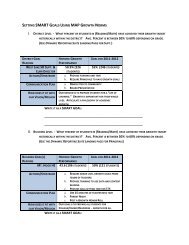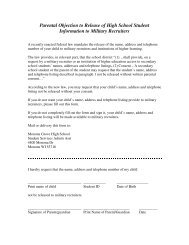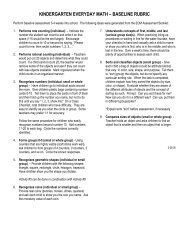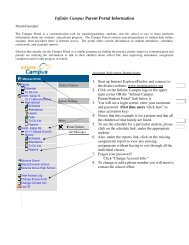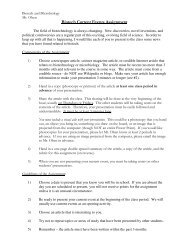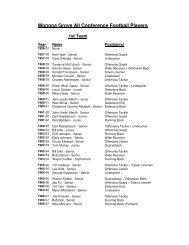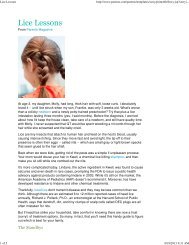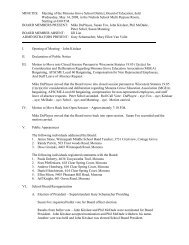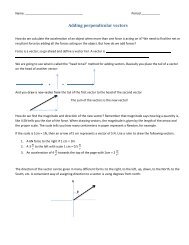Packet for Cu lab, naming and writing formulas, reaction types and ...
Packet for Cu lab, naming and writing formulas, reaction types and ...
Packet for Cu lab, naming and writing formulas, reaction types and ...
Create successful ePaper yourself
Turn your PDF publications into a flip-book with our unique Google optimized e-Paper software.
Observations be<strong>for</strong>e <strong>reaction</strong><br />
Observations during <strong>and</strong> after the <strong>reaction</strong><br />
• <strong>Cu</strong>(OH) 2: • During <strong>reaction</strong>:<br />
• After <strong>reaction</strong>:<br />
H. What evidence of chemical change did you observe? ________________________________________________<br />
____________________________________________________________________________________________<br />
I. Was the <strong>reaction</strong> an exothermic or endothermic <strong>reaction</strong>? Describe your answer: ___________________________<br />
____________________________________________________________________________________________h<br />
e <strong>reaction</strong> you completed is described below. Write it in symbols:<br />
The warming up of copper (II) hydroxide yields copper (II) oxide <strong>and</strong> water.<br />
J. Now circle the reactants, <strong>and</strong> put a square around the products. Remember to <strong>lab</strong>el each reactant <strong>and</strong> product as<br />
(s), (l), (g), or (aq).<br />
9) Gently tip the beaker to pour off the liquid <strong>and</strong> use the stirring rod to guide the liquid to a beaker below (this is called<br />
decanting). Do not remove any of the solid!<br />
K. What do you think is the purpose of decanting? _______________________________________________________<br />
_____________________________________________________________________________________________<br />
L. The <strong>reaction</strong> you completed is described below. Write it in symbols:<br />
The warming up of copper (II) hydroxide yields copper (II) oxide <strong>and</strong> water.



